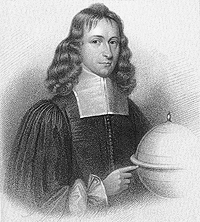
.jpg)
He died a few days later at the age of 36. Last YearsĪbout a year after assuming the Chair of Mathematics at Edinburgh, James Gregory suffered a stroke while viewing the moons of Jupiter with his students. James Gregory also discovered the diffraction of light by bird feathers and investigated the diffraction patterns occurring in this process. Many of these works can only be found in letters to colleagues, as Gregory published very little after a plagiarism dispute with Christiaan Huygens. Andrews, such as the independent discovery of the Taylor formula in 1671, which Brook Taylor himself did not publish until 1715. A year later he married in St Andrews Mary Jamesome who becomes the mother of two daughters and one son. Other important achievements followed in St. The latter opened up new ways of calculating the circle.
#Vera circuli et hyperbolae quadratura series
Upon his return to London in 1668 Gregory was elected a Fellow of the Royal Society, before travelling to St Andrews in late 1668 to take up his post as the first Regius Professor of Mathematics, a position created for him by Charles II, probably upon the request of Robert Moray. What is certain is that this summer he knew the Taylor series of sine and cosine as well as the tangent. James Gregory, Vera circuli et hyperbolae quadratura, 1667 Return to London In 1664 he departed for the University of Padua, where he lived in the house of his countryman James Caddenhead, the professor of philosophy, and he was taught by Italian mathematician, philosopher, and Jesuat Stefano Angeli, working on the calculation of circular and parabolic surfaces by infinite convergent series. In 1663 Gregory went to London, meeting John Collins and fellow Scot Robert Moray, one of the founders of the Royal Society. However, English natural philosopher Robert Hooke learnt of Reive’s failed attempt at making the parabolic mirror and this would lead to a successful construction of the first Gregorian telescope around ten years later. His attempt did not satisfy Gregory who decided to give up the idea of having Reive construct the instrument. John Collins advised him to seek the help of a leading optician by the name of Reive who, at Gregory’s request, tried to construct a parabolic mirror. Gregory’s aim was to find someone who could construct a telescope to the design set out in his book. Gregory also described the method for using the transit of Venus to measure the distance of the Earth from the Sun, which was later advocated by Edmund Halley and adopted as the basis of the first effective measurement of the Astronomical Unit.Ī Gregorian telescope of English manufacture circa 1735, owned by John Winthrop, on display at the Putnam Gallery in the Harvard Science Center From Theory to Practice The design pre-dates the first practical reflecting telescope, the Newtonian telescope, built by Sir Isaac Newton in 1668, but was not successfully built until five years after Newton’s first reflecting telescope. He showed that the combination would work more effectively than a telescope which used only mirrors or used only lenses. His novel idea was to use both mirrors and lenses in his telescope. The tube of the Gregorian telescope is thus shorter than the sum of the focal lengths of the two mirrors.

There is a central hole in the main mirror through which the light passes and is brought to a focus by an eyepiece lens. Reflection of light rays from its surface converge to the ellipsoid’s second focus which is behind the main mirror. A primary concave parabolic mirror converges the light to one focus of a concave ellipsoidal mirror. There, Gregory described his design for a reflecting telescope, the “ Gregorian telescope“. Encouraged by his brother David, he wrote a book on the topic Optica Promota ( The Advance of Optics), published in 1663. Gregory began to study optics and the construction of telescopes. After his father’s death in 1651, Gregory was sent to Aberdeen Grammar School, and then to Marischal College, graduating in 1657. Initially he was educated at home by his mother, Janet Anderson, who endowed Gregory with his appetite for geometry, since her uncle Alexander Anderson has been a pupil and editor of French mathematician Francois Viète, whose work on new algebra was an important step towards modern algebra. James Gregory was born at Drumoak, Aberdeenshire, UK, the youngest of the 3 children of John Gregory, an Episcopalian Church of Scotland minister. Gregory described an early practical design for the reflecting telescope – the Gregorian telescope – and made advances in trigonometry, discovering infinite series representations for several trigonometric functions. In November 1638, Scottish mathematician and astronomer James Gregorywas born.


 0 kommentar(er)
0 kommentar(er)
